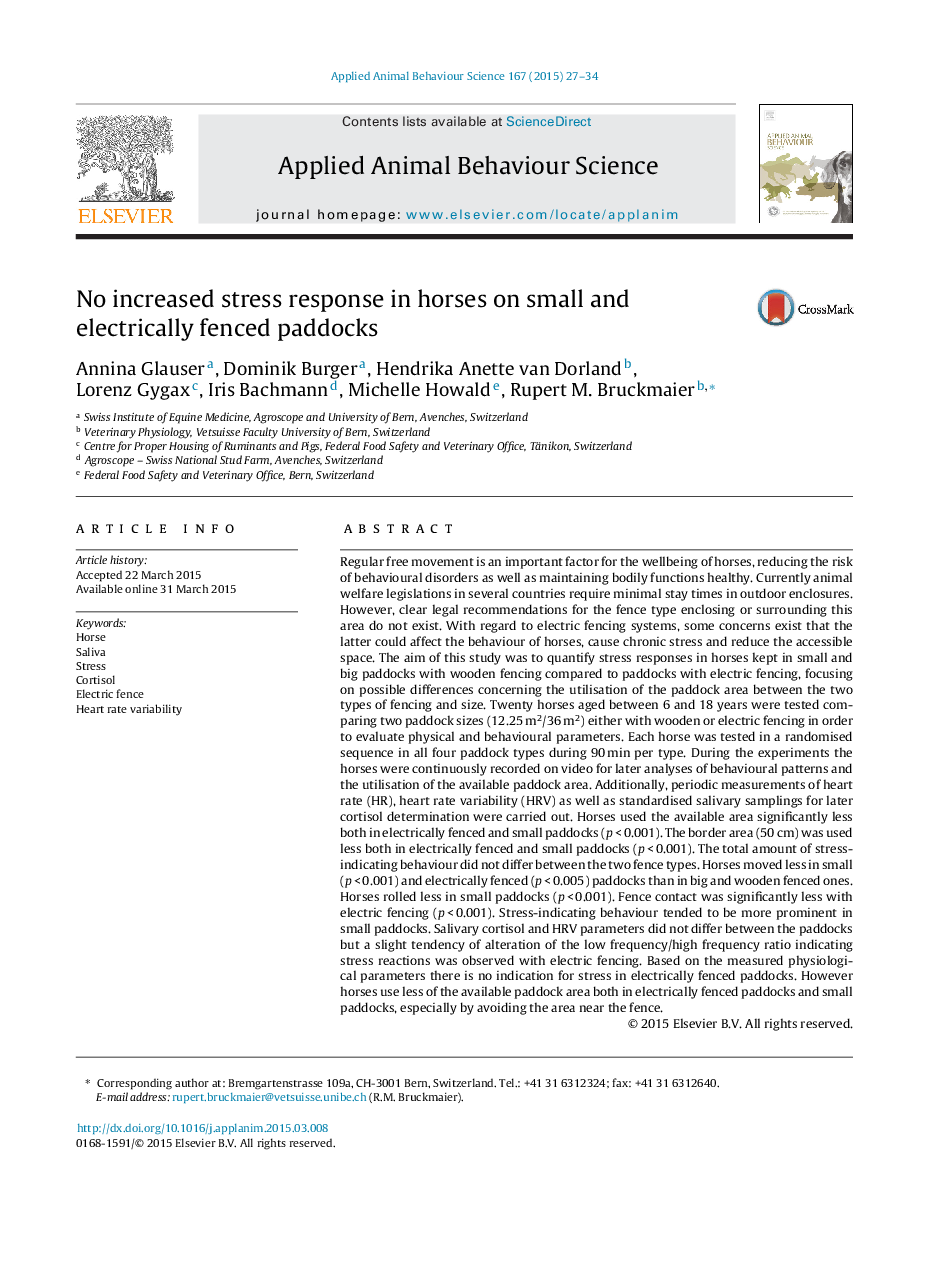| کد مقاله | کد نشریه | سال انتشار | مقاله انگلیسی | نسخه تمام متن |
|---|---|---|---|---|
| 4522480 | 1625339 | 2015 | 8 صفحه PDF | دانلود رایگان |
• No indication of stress in electrically fenced paddocks.
• Cardiovascular, endocrine, and behavioural parameters similar in all paddocks.
• Horses use less of the available area in electrically fenced and small paddocks.
• Horses avoid the area near the fence in electrically fenced paddocks.
Regular free movement is an important factor for the wellbeing of horses, reducing the risk of behavioural disorders as well as maintaining bodily functions healthy. Currently animal welfare legislations in several countries require minimal stay times in outdoor enclosures. However, clear legal recommendations for the fence type enclosing or surrounding this area do not exist. With regard to electric fencing systems, some concerns exist that the latter could affect the behaviour of horses, cause chronic stress and reduce the accessible space. The aim of this study was to quantify stress responses in horses kept in small and big paddocks with wooden fencing compared to paddocks with electric fencing, focusing on possible differences concerning the utilisation of the paddock area between the two types of fencing and size. Twenty horses aged between 6 and 18 years were tested comparing two paddock sizes (12.25 m2/36 m2) either with wooden or electric fencing in order to evaluate physical and behavioural parameters. Each horse was tested in a randomised sequence in all four paddock types during 90 min per type. During the experiments the horses were continuously recorded on video for later analyses of behavioural patterns and the utilisation of the available paddock area. Additionally, periodic measurements of heart rate (HR), heart rate variability (HRV) as well as standardised salivary samplings for later cortisol determination were carried out. Horses used the available area significantly less both in electrically fenced and small paddocks (p < 0.001). The border area (50 cm) was used less both in electrically fenced and small paddocks (p < 0.001). The total amount of stress-indicating behaviour did not differ between the two fence types. Horses moved less in small (p < 0.001) and electrically fenced (p < 0.005) paddocks than in big and wooden fenced ones. Horses rolled less in small paddocks (p < 0.001). Fence contact was significantly less with electric fencing (p < 0.001). Stress-indicating behaviour tended to be more prominent in small paddocks. Salivary cortisol and HRV parameters did not differ between the paddocks but a slight tendency of alteration of the low frequency/high frequency ratio indicating stress reactions was observed with electric fencing. Based on the measured physiological parameters there is no indication for stress in electrically fenced paddocks. However horses use less of the available paddock area both in electrically fenced paddocks and small paddocks, especially by avoiding the area near the fence.
Journal: Applied Animal Behaviour Science - Volume 167, June 2015, Pages 27–34
